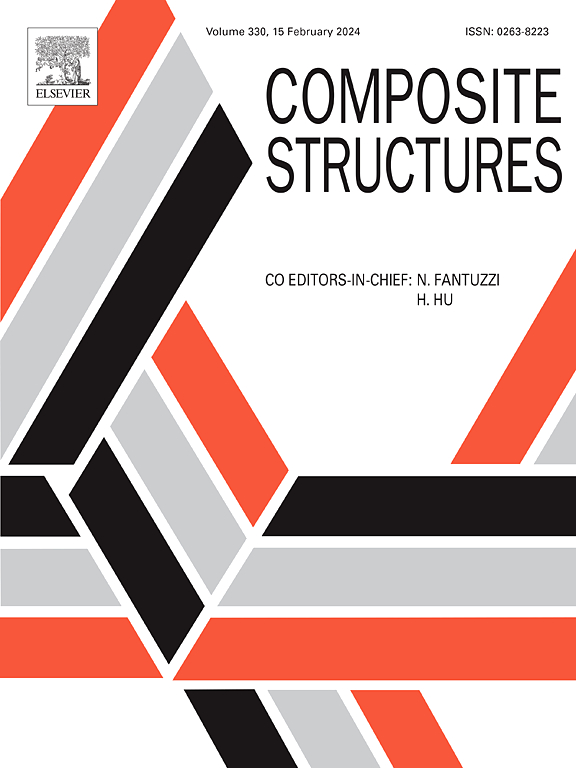Braiding-process-induced damage and deformation of three-dimensional braided preform: A numerical investigation
IF 6.3
2区 材料科学
Q1 MATERIALS SCIENCE, COMPOSITES
引用次数: 0
Abstract
Three-dimensional braided composites (3DBC) are widely used in aerospace due to their excellent impact resistance and structural integrity. The excellent mechanical performance of 3DBC can be achieved by ensuring precise dimensions, stable structure and low-damage fabrication technology for the 3D braided preform. In this research work, we developed meso-scale and micro-scale finite element models to numerically analyze the damage and deformation behavior of braided structures during the fabrication process of 3D braided preform. The deformation and damage mechanism of fibers at different scales during 3D braiding process are first analyzed. The results show that stress always concentrates at the interlaced regions and is affected by the beating-up process. The outer yarns are more easily damaged during the braiding process. In the beating-up process, when the beater reaches the highest point, the first broken fiber is generated, and the broken fiber is located in the interlaced area. The damage caused by the beating-up motion is greater than that caused by fiber movement. The damage to the elements is mainly caused by shear stress. The greater the friction coefficient between fibers and the higher of the beating-up height, the more severe fiber deformation in the interlaced area. These results can provide valuable guidance for the fabrication of high-quality 3D braided preforms.
三维编织预制体编织过程损伤与变形的数值研究
三维编织复合材料(3DBC)以其优异的抗冲击性能和结构完整性在航空航天领域得到了广泛的应用。通过保证三维编织预制体的尺寸精确、结构稳定和低损伤制造技术,可以实现3DBC优异的机械性能。在本研究中,我们建立了细观尺度和微观尺度的有限元模型来数值分析三维编织预制体制作过程中编织结构的损伤和变形行为。首先分析了三维编织过程中纤维在不同尺度下的变形和损伤机理。结果表明,应力总是集中在交错处,并受镦粗过程的影响。外层纱线在编织过程中更容易损坏。在打纬过程中,当打纬器到达最高点时,产生第一根断纤维,断纤维位于交错区域。打浆运动造成的损伤大于纤维运动造成的损伤。构件的破坏主要是由剪应力引起的。纤维间摩擦系数越大、打浆高度越高,交织区纤维变形越严重。研究结果可为制备高质量的三维编织预制体提供有价值的指导。
本文章由计算机程序翻译,如有差异,请以英文原文为准。
求助全文
约1分钟内获得全文
求助全文
来源期刊

Composite Structures
工程技术-材料科学:复合
CiteScore
12.00
自引率
12.70%
发文量
1246
审稿时长
78 days
期刊介绍:
The past few decades have seen outstanding advances in the use of composite materials in structural applications. There can be little doubt that, within engineering circles, composites have revolutionised traditional design concepts and made possible an unparalleled range of new and exciting possibilities as viable materials for construction. Composite Structures, an International Journal, disseminates knowledge between users, manufacturers, designers and researchers involved in structures or structural components manufactured using composite materials.
The journal publishes papers which contribute to knowledge in the use of composite materials in engineering structures. Papers deal with design, research and development studies, experimental investigations, theoretical analysis and fabrication techniques relevant to the application of composites in load-bearing components for assemblies, ranging from individual components such as plates and shells to complete composite structures.
 求助内容:
求助内容: 应助结果提醒方式:
应助结果提醒方式:


